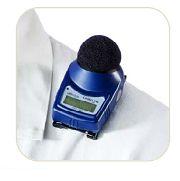As well as the broad range of environmental and architectural services that WBM provides, we can also undertake noise at work assessments in accordance with the Control of Noise at Work Regulations 2005. Three of our staff hold the Institute of Acoustics Certificate of Competence in Workplace Noise Assessment and we have undertaken assessments at entertainment venues, factories, and at educational establishments for Local Authorities.
What are the Control of Noise at Work Regulations?
The aim of the Control of Noise at Work Regulations 2005 is to ensure that workers’ hearing is protected from excessive noise at their place of work. The regulations define limit values and action values for the noise exposure of employees, including:
Lower exposure action values – daily or weekly personal noise exposure of 80 dB(A) and a peak sound pressure of 135 dB(C). At these values, employers must provide hearing protection to those employees who request it.
![]() Upper exposure action values – daily or weekly personal noise exposure of 85 dB(A) and a peak sound pressure of 137 dB(C). Where levels exceed these values, employers should ensure that ear protection zones are clearly marked and that employees wear hearing protection whilst in these zones.
Upper exposure action values – daily or weekly personal noise exposure of 85 dB(A) and a peak sound pressure of 137 dB(C). Where levels exceed these values, employers should ensure that ear protection zones are clearly marked and that employees wear hearing protection whilst in these zones.
Exposure limit values – daily or weekly personal noise exposure of 87 dB(A) and a peak sound pressure of 140 dB(C). If employees are exposed to levels above these limit values, the noise levels must be reduced to below the exposure limit value, taking into account the reduction offered by hearing protection.
What does an assessment include?
 Noise at work assessments usually include surveys of relevant work activities, using sound level meters and/or dosemeters. The noise measurements are undertaken at (or at a location representative of) an employee’s ear. The survey results are compared with the action and limit values set out in the Control of Noise at Work Regulations 2005 and recommendations provided on the use of hearing protection. Advice regarding noise mitigation can also be given.
Noise at work assessments usually include surveys of relevant work activities, using sound level meters and/or dosemeters. The noise measurements are undertaken at (or at a location representative of) an employee’s ear. The survey results are compared with the action and limit values set out in the Control of Noise at Work Regulations 2005 and recommendations provided on the use of hearing protection. Advice regarding noise mitigation can also be given.

